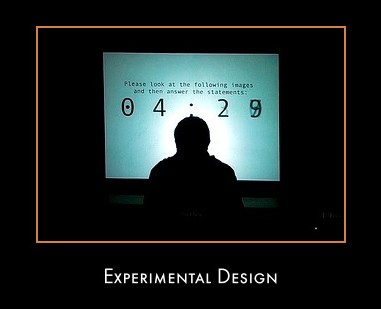|
Experimental Design Guide
Experimental Design Guide
(Photo Credit: claudia vieira) This quick reference guide should be used in conjunction with the experimental design tutorial. You can access both parts of the experimental design tutorial by clicking on the following links. Experimental Design Tutorial Part 1 Experimental Design Tutorial Part 2
Quick Reference GuideEXPERIMENTAL HYPOTHESIS (H1) The prediction of the outcome of the experiment ONE-TAILED EXPERIMENTAL HYPOTHESIS Predicts the way that behavior will change TWO-TAILED EXPERIMENTAL HYPOTHESIS Simply states that the behavior will change NULL HYPOTHESIS (H0) Simply states that any observed differences between groups were down to chance. INDEPENDENT VARIABLE (IV) The one factor that is different between the conditions DEPENDENT VARIABLE (DV) The aspect of behavior that is measured EXTRANEOUS VARIABLE Anything, other than the IV that might have had an effect on the result of the experiment. CONFOUNDING VARIABLE An extraneous variable that does effect the result of the experiment. In doing so, it becomes impossible to say whether any difference found was due to the IV or the confounding variable. INDEPENDENT SUBJECTS DESIGN Some subjects perform in experimental condition and others in control condition. REPEATED MEASURES DESIGN All subjects perform in both experimental condition and control condition MATCHED PAIRS DESIGN As a result of a pre-test subjects are sorted into pairs. One of the pair performs in the experimental condition and the other performs in the control. ORDER EFFECTS If a participant has to perform a series of actions, the order in which she/he performs them will have an effect on the efficiency of each action. The two main order effects are practice (increases efficiency) and fatigue (decreases efficiency). COUNTERBALANCING Employed to ensure that order effects have an equal effect by alternating the conditions.
Read FBI Profiling Classics on KindleThis special Kindle collection consists primarily of the landmark articles written by members of the Behavioral Science Units, National Center for the Analysis of Violent Crime, at the FBI Academy. These seminal publications in the history of FBI profiling were released by the U.S. Department of Justice as part of the information on serial killers provided by the FBI's Training Division. See following link for full details. Back To Top Of The Page
|
